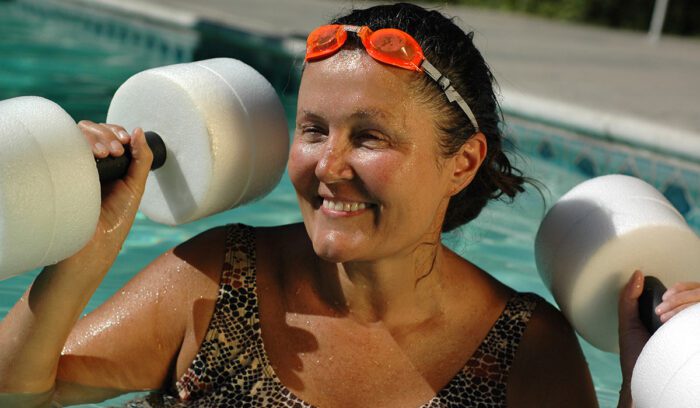Exercise has a positive impact on all the body’s systems. Regular daily movement — everything from a brisk walk to gardening — helps! So, whether you love going to the gym, doing yoga, hiking, swimming, or dancing around the house, the key is to move frequently every day.
You’re never too old to start reaping the benefits of regular movement. Make exercise or movement a priority for you every day — starting today!
Here’s how exercise and movement help keep each of your body’s systems in tip top shape.
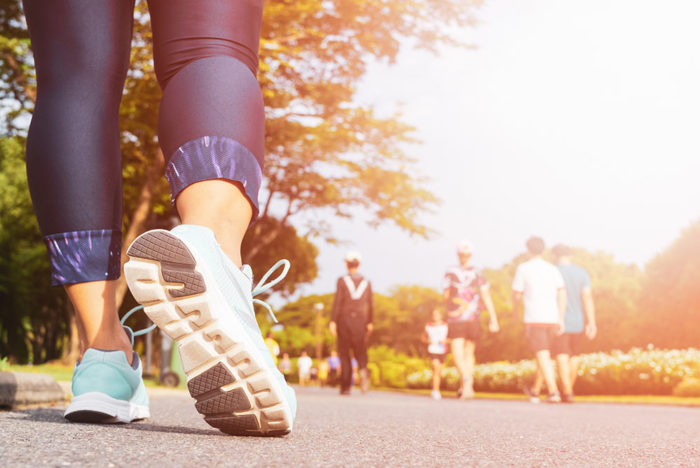
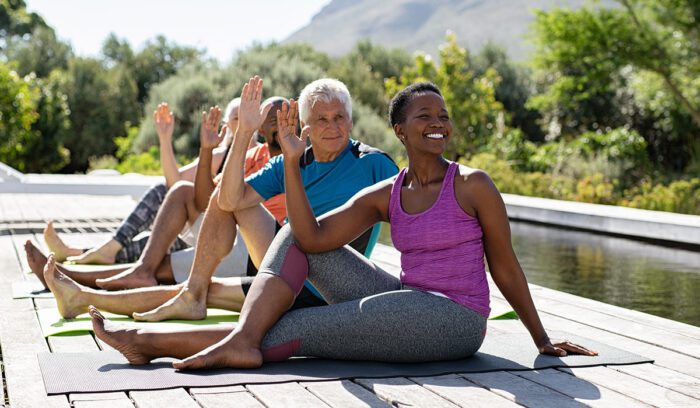
Respiratory System
The respiratory system includes your airways, lungs, and blood vessels. These are the organs and tissues that enable you to breathe. This system moves oxygen throughout your body and cleans out waste gases like carbon dioxide.
When you move, your lungs expand to provide your muscles with the oxygen they need to perform. Exercise makes your lungs work harder and become stronger. The more you exercise, the more efficient your lungs become at supplying your whole body with oxygen. Aerobic activities such as walking, running, or jumping rope help your lungs work more efficiently. Muscle-strengthening activities like weightlifting or Pilates can help tone your breathing muscles.
Circulatory System
The circulatory, or cardiovascular, system includes the lungs, lymph tissue, heart, and blood vessels, which work in collaboration with your liver, stomach, intestines, and other organs. This system is responsible for moving blood around your body as well as transporting oxygen and nutrients to the body’s trillions of cells. It also acts as a cleaning system by removing toxins from the cells. Your circulatory system works closely with your lymphatic system to balance fluids and boost your immune system by producing white blood cells.
Exercise and movement enable the muscles in your body to pull oxygen out of the blood, so your heart does not have to work as hard to pump blood to your muscles. It also helps reduce stress hormones which can put an extra burden on the heart. Aerobic exercise is best for your heart, including anything that gets your heart beating faster such as running, dancing, and cycling.


Immune System
Your immune system includes a network of organs, white blood cells, proteins (antibodies), and chemicals. All of these work together to help protect your body from bacteria, viruses, parasites, and fungi.
Exercise helps bolster your immune system by increasing the amount of white blood cells in your body. Thirty minutes of exercise three days per week is a good way to strengthen your immune system. This can be a brisk walk, bike ride, or gardening. Stress can weaken the immune system which is why you need to move more when you are facing challenging times.
Digestive (Intestinal) System
The digestive system includes the mouth, pharynx (throat), esophagus, stomach, small intestine, large intestine, rectum, and anus as well as the salivary glands, liver, gallbladder, and pancreas. This system is responsible for breaking down and absorbing the nutrients your body needs from the food you eat. This process produces energy, promotes growth, and repairs cells.
Exercise and movement stimulate blood flow to the muscles that operate your digestive system, which helps them work more effectively, moving food along your intestinal tract faster. This activity helps increase nutrient absorption and ease digestive problems such as constipation and bloating. Exercise can also help improve the diversity of bacteria in your gut. A more diverse gut microbiome helps the immune system work more effectively.
Yoga is great for digestive health because it includes twists and bends that can stimulate the digestive system and intestinal organs. Once stimulated, the organs of these systems will work more efficiently, improving your overall health.
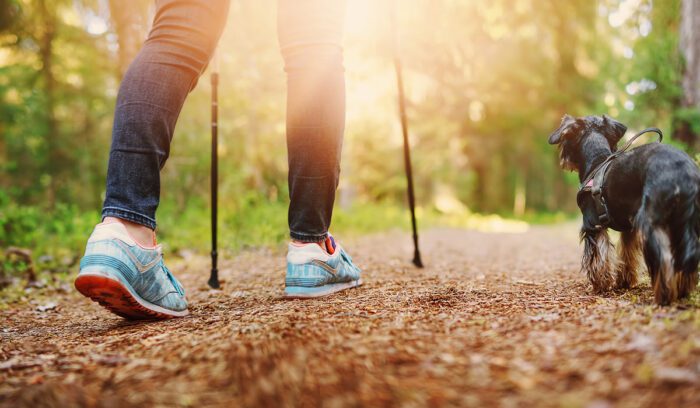
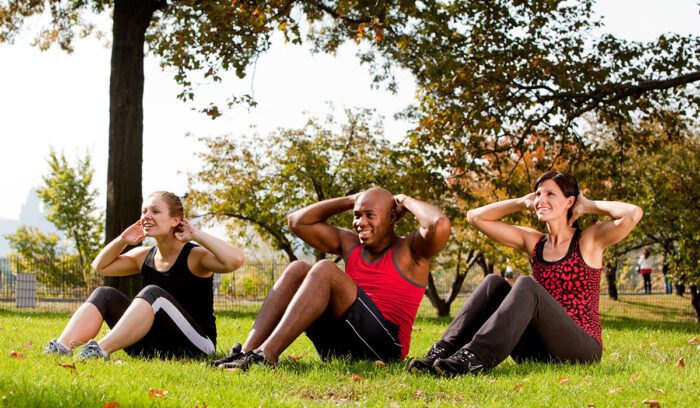
Urinary System
The urinary system includes the kidneys, ureters, bladder, and urethra. It’s responsible for filtering your blood to get rid of what your body doesn’t need, including extra water and salt, toxins, and other waste products. The waste becomes your urine. Drinking plenty of water and other fluids is a good way to keep your urinary system healthy.
The more you move your body, the more fluids you are likely to drink. Moving can also stimulate the bladder, causing the need to pee. All of this will help flush out the urinary system and help prevent kidney stones and urinary tract infections or UTIs.
Endocrine (Glandular) System
Your endocrine system is made up of glands that release chemicals and hormones that help to regulate your body’s various functions. The pituitary gland releases human growth hormone, which tells the body to increase bone, muscle, and tissue production. The thyroid gland releases hormones that regulate the body’s temperature, heart rate, and blood pressure. And your adrenal gland releases cortisol which controls blood pressure and glucose and acts as an anti-inflammatory agent. Your pancreas secretes hormones that help regulate your glucose (also known as blood sugar) level. The pancreas secretes this hormone to lower blood glucose when levels get too high.
High-intensity exercises like squats, pull-ups, and pushups, encourage the release of these vital hormones and chemicals. Exercise also improves the endocrine system’s ability (with your nervous system) to coordinate all the body’s functions to maintain equilibrium in the body.


Nervous System
Your nervous system includes your brain, cerebellum (known as the little brain), and spinal cord as well as neurons and cells throughout the body. This system is responsible for thought, learning, and memory and — with the endocrine system — maintaining equilibrium in your body.
Exercise is necessary to keep your nervous system functioning well as it increases the amount of blood flow to your brain which brings oxygen and nutrients with it. Exercise also encourages the release of beneficial proteins which keep brain cells (or neurons) healthy and promote the growth of new brain cells. Exercise can also help boost mood, reduce stress, and improve brain function.
Exercises which get your blood moving, such as jogging or skipping rope, are great for the health of your nervous system.
Musculoskeletal (Structural) System
Your musculoskeletal system includes your bones, muscles, cartilage, tendons, ligaments, and joints. This system supports your body, enabling you to move. It also protects all your vital organs.
Exercise helps strengthen your musculoskeletal system. It also helps you maintain muscle mass and slows bone loss, protecting you from serious injury from falls as you age. There are many types of exercise that are good for your musculoskeletal system including lifting weights, gardening, walking, cycling, and swimming.
